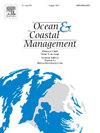坦桑尼亚两个沿海城市土地利用的时空变化和红树林的丧失及其对生态系统服务提供的影响
IF 5.4
2区 环境科学与生态学
Q1 OCEANOGRAPHY
引用次数: 0
摘要
红树林为当地和全球提供了各种各样的产品和生态服务。然而,我们对坦桑尼亚沿海城市土地利用变化、红树林丧失以及生态系统服务丧失的人为驱动因素的理解有限。我们在两个选定的河口进行了一项研究:达累斯萨拉姆的姆托尼和普瓦尼地区的基西朱。我们确定了1980年、2000年和2020年的时空土地利用变化,并进行了社会经济问卷调查,以研究变化驱动因素和对生态系统服务提供的感知影响。我们发现,在过去的40年里,土地利用发生了相当大的变化,导致红树林消失或向其他覆盖类型过渡。Mtoni河口封闭红树林面积1980 ~ 2000年减少了- 95.63 ha, 2000 ~ 2020年减少了-109.87 ha。1980 - 2000年,kisisju河口封闭红树林面积分别减少了- 74.5 ha和23.5 ha。不同比例的开放红树林的出现是由于为了生产木炭、木柴和建筑而进行的森林砍伐造成了封闭红树林的损失,导致土地贫瘠。人口增长的归因驱动因素以及与农业、砍伐树木制造木炭、薪材和建筑材料有关的相关不可持续的土地利用做法。风暴、海平面和气温上升以及洪水等气候变化事件导致了红树林的死亡。红树林丧失和不可持续的土地利用变化所造成的后果是生态系统服务的丧失,如捕鱼量减少、关键的鱼类繁殖地恶化、暴露于洪水灾害、风暴和沉积之中。红树林的消失降低了它们保护沿海社区免受洪水侵袭的能力,也丧失了固碳和减缓气候变化的潜力。我们的研究结果建议改善红树林保护和适应性综合方法来保护这些重要的生态系统。本文章由计算机程序翻译,如有差异,请以英文原文为准。
Spatio-temporal land use change and loss of mangrove forest in two coastal cities in Tanzania and the perceived implications on provisioning of ecosystem services
Mangroves supply a diverse range of products and ecological services, both locally and globally. However, our understanding of the anthropogenic drivers of land use change and mangrove loss, as well as loss of ecosystem services in Tanzanian coastal cities is limited. We conducted a study in two selected estuaries: Mtoni in Dar es Salaam and Kisiju in the Pwani area. We determined spatio-temporal land use change in 1980, 2000, and 2020, and conducted socioeconomic questionnaires to examine change drivers and perceived implications on ecosystem services provisioning. We revealed that over the last four decades, there have been considerable changes in land use that resulted in mangrove losses or transitions to the other cover type. The closed mangroves in the Mtoni estuary decreased by −95.63 ha from 1980 to 2000, and -109.87 ha from 2000 to 2020. In the Kisiju estuary from 1980 to 2000, the fraction of closed mangroves declined by −74.5 ha and 23.5 ha between 2000 and 2020. The emergence of open mangroves by different fractions is a result of losses occurred on closed mangroves through forest clearing for charcoal production, firewood, and building resulting in barren land. The attributing drivers of change population growth and the associated unsustainable land use practices related to farming, cutting trees for charcoal making, fuelwood, and building materials. Climate change events such as storms, rising sea levels and temperatures as well as flood events have contributed to death of mangroves. The loss of ecosystem services such as reduced fish catch, deterioration of critical breeding grounds for fish, exposure to flood hazards, storms and sedimentation are the perceived outcomes of the loss of mangroves and unsustainable land use change. The loss of mangroves has reduces their ability to protect coastal communities from flooding and loss of the potential to sequester carbon and mitigate climate change. Our findings, recommended for improving mangrove conservation and adaptive integrated approaches are needed to conserve these important ecosystems.
求助全文
通过发布文献求助,成功后即可免费获取论文全文。
去求助
来源期刊

Ocean & Coastal Management
环境科学-海洋学
CiteScore
8.50
自引率
15.20%
发文量
321
审稿时长
60 days
期刊介绍:
Ocean & Coastal Management is the leading international journal dedicated to the study of all aspects of ocean and coastal management from the global to local levels.
We publish rigorously peer-reviewed manuscripts from all disciplines, and inter-/trans-disciplinary and co-designed research, but all submissions must make clear the relevance to management and/or governance issues relevant to the sustainable development and conservation of oceans and coasts.
Comparative studies (from sub-national to trans-national cases, and other management / policy arenas) are encouraged, as are studies that critically assess current management practices and governance approaches. Submissions involving robust analysis, development of theory, and improvement of management practice are especially welcome.
 求助内容:
求助内容: 应助结果提醒方式:
应助结果提醒方式:


